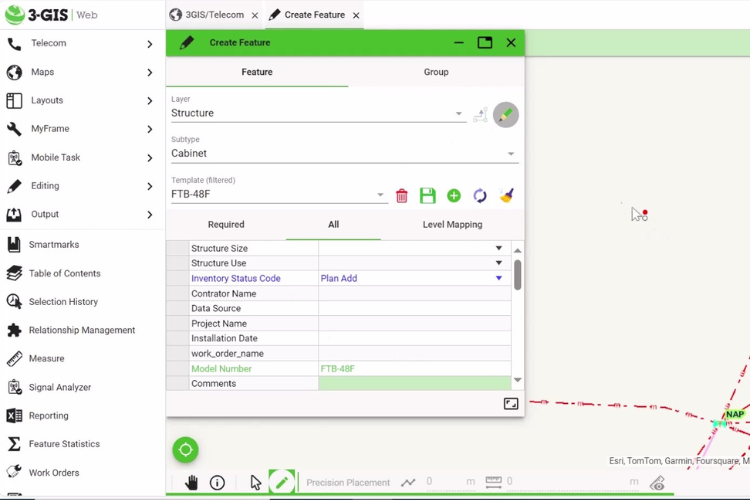In telecommunications, the modeling of network elements is essential for efficient network design and management. Two prominent tools used for this purpose are Ericsson Network Engineer and 3-GIS | Web. With the former heading towards its end of life, many network operators are now looking for a replacement solution. In this post, we explore the differences and similarities between these tools in relation to modeling telecom elements, providing insights into their respective functionalities and user experiences.
Understanding the basics: Templates vs. models
In the context of telecom network design, both Ericsson Network Engineer and 3-GIS use models to represent real-world telecom elements. However, the terminology and approach vary between the two platforms:
Ericsson Network Engineer: In this platform, models represent the various elements of a telecom network. The process involves creating a list of models, each representing different network elements, which can then be used in network design. The process though is rigid. For example, one must build a model first before using the element in a design.
3-GIS: Here, the concept of models is referred to as "templates." These templates provide a structured way to represent network elements, offering a consistent framework for building and managing network designs. The process followed by 3-GIS is more flexible. For example, while the templates can be pre-built, users are allowed to create the network elements and templates during the design process too.
Model building in Ericsson Network Engineer
Ericsson Network Engineer provides a robust interface for creating and managing models, known as the Model Builder application. This application offers a comprehensive view of all network elements for which models are built. The interface is characterized by a rich set of toolbars and options within a thick application environment.
Model Builder application: Users access the Model Builder to create and manage a comprehensive list of network elements. This list includes everything from structures to equipment, and it is integrated within the Network Engineer application.
Model Palette: Once models are built, they are added to the palette within the application. This allows network engineers to easily use these models in their network designs, providing a seamless workflow for network creation and management.
Template management in 3-GIS
3-GIS takes a slightly different approach by integrating template management directly into its Admin and Web applications. This integration provides a streamlined, thin application experience for users, simplifying the process of creating and managing templates.
Admin application: The 3-GIS | Admin application serves as a central hub for creating and managing templates. However, users can also build templates directly within the Web application, eliminating the need for separate applications or filters.
Layer subtypes: 3-GIS manages network elements as a combination of layers, subtypes, and template names. This layered approach allows for precise management of various network components, such as structures, spans, and equipment.
Prefilled attributes: When creating templates in 3-GIS, users benefit from prefilled attributes, such as status, levels, and subtype codes. This feature enhances efficiency by reducing manual input and ensuring consistency across templates.
Practical application and user experience
Both Ericsson Network Engineer and 3-GIS offer practical tools for network design, but their user experiences differ based on application structure and functionality.
Ericsson Network Engineer: Users rely on a thick application environment, where models are built and managed using the Model Builder. The process involves selecting models from a palette and incorporating them into network designs.
3-GIS: Users experience a thin application environment, where templates are managed through an integrated web interface. This approach allows for greater flexibility and ease of use, with templates readily available for network creation.
Advanced features and group templates
3-GIS offers additional functionality using group templates. These templates allow users to create collections of multiple network elements, streamlining the process of placing complex configurations within a network design.
Users can define group templates that include multiple elements, such as equipment panels, splitters, and other components. When applied, these templates automatically place all associated elements, saving time and ensuring consistency.
Both Ericsson Network Engineer and 3-GIS provide powerful tools for modeling telecom elements, each with its own unique approach. Ericsson Network Engineer focuses on a detailed, thick application experience with a dedicated Model Builder, while 3-GIS offers a streamlined, web-based approach with integrated template management. By understanding network modeling, telecom professionals can identify the best tools to support their network design needs during the transition from Ericsson Network Engineer, leading to more efficient and effective management.
Check out the below video for a detailed walk through.



